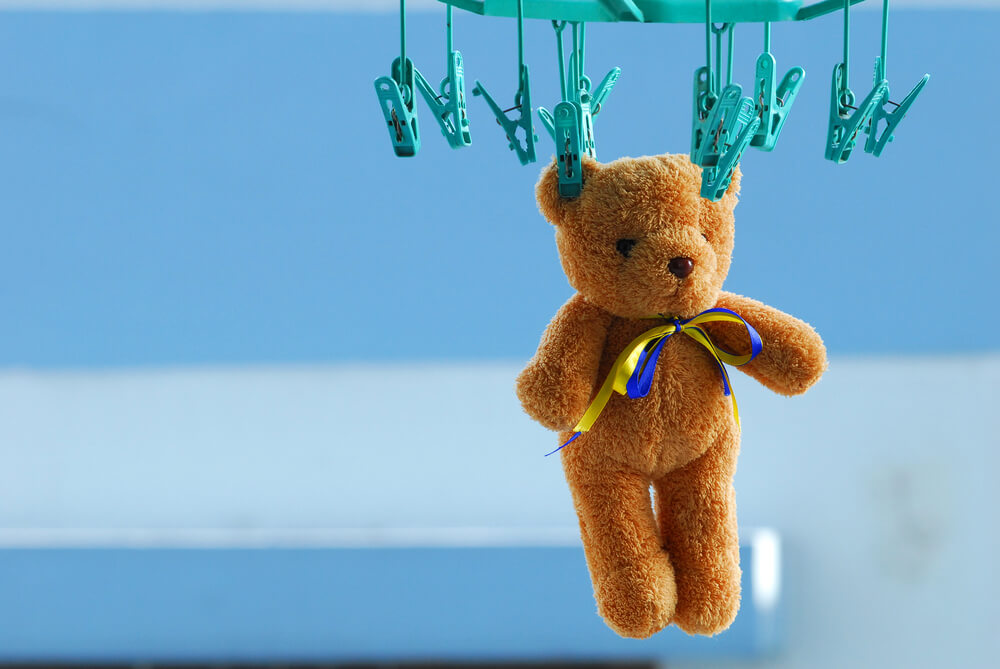Wash Your Children's Toys without Damaging Them

To have a healthy home, you need to maintain a certain level of hygiene, especially if you have children; therefore, discover how to wash your children’s toys without damaging them and provide them with an environment that’s safe, clean, and in good condition.
On the market, there are detergents and cleaning products that can damage the materials toys are made of. So, you need to know what possibilities you have within your reach and what means are the most suitable and reliable.
Our children’s dolls and toy must be in good condition so they can enjoy them. It’s useless to spend money on a toy that, after a couple of washes, loses its original color, breaks down, and even becomes a harmful agent for the skin.
Cleaning plastic toys

Children usually put all sorts of object in their mouths. Toys are in daily contact with the little ones and, with use, they carry infectious agents.
How can toys be washed so that they’re completely sanitized and suitable for use? It’s a good idea to clean them at least once a week; however, everything will depend on the use that’s given to them.
Bleach is a strong but effective product. Plastic perfectly resists its application; however, it would be a good idea to wash them weekly with soap and water and occasionally with bleach. Neither the paint nor the material itself will suffer; In any case, over the years, they may suffer some deterioration.
The main objective is that they’re free of bacteria and that they’re safe. The idea is for children to be able to manipulate them freely without any danger.
If you want toys to last for many years, you need to treat them with care.
Wash your children’s wooden toys: The best options
Of course, wood cleaning products used for home furnishings come in handy. In any case, you also have the option of using vinegar as the main means to try to remove stains without the material suffering.
It’s possible to use soap and water to pre-wash the surface. However, this wouldn’t be necessary, as the wooden toy would be sanitized and protected by the vinegar.
Another possibility would be to produce a homemade cleaning product: A mixture of oil and bicarbonate. Apply it to the toy and then remove it with a pad to leave the surface clean.
How to wash you children’s cloth toys: 3 formulas to avoid damaging them

The toys that predominate most in homes are plastic ones; However, those made of cloth are also quite popular, although they’re a minority. Within this group are stuffed animals, puppets, and other accessories of different formats. Let’s see 3 ways to clean them effectively:
- The most widely used system is the machine washing. This way, we save time, the textures are cared for, and the loss of color is prevented. In addition, it helps them to have a good smell and washes them just as if they were clothes. It’s the best way to prevent the appearance of mold.
- Another very interesting formula is washing them by hand and with natural soap. If they have any stains on the surface, you can rub them and try to remove impurities effectively. It’s a superficial cleaning of the outer fabric.
- The newest formula would be producing a special liquid that’s made up of two tablespoons of hydrogen peroxide mixed with one tablespoon of laundry soap. Next, introduce the mixture into a sprayer with a little water and spray it on the surface of the toy. Finally, with a cloth, dry and remove the dirt.
Cleaning electronic toys
Within the category of electronic toys, we must be very careful with the internal equipment so as not to cause damage. In this case, it’s not a good idea to use any of the aforementioned products.
If it’s a stuffed animal or a plastic object but with an electrical system, you can clean it with a brush that removes all internal dirt. On the other hand, for the outer part you can use a cloth wet with hydrogen peroxide.
All cited sources were thoroughly reviewed by our team to ensure their quality, reliability, currency, and validity. The bibliography of this article was considered reliable and of academic or scientific accuracy.
- AA. VV.: Limpieza de interior de muebles, Vértice, 2009.
- Tabero, Pepa: Manual de la casa limpia y ordenada, La Esfera, 2016.